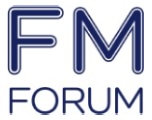The adoption of Total Facilities Management (Total FM) continues to grow across both public and private sectors. Offering an integrated model that combines multiple FM services – such as cleaning, maintenance, energy, security, and compliance – into one contract, Total FM is delivering efficiency, transparency, and improved service standards. However, as delegates at the FM Forum know, the operational demands, procurement approaches, and expectations differ significantly between public sector institutions and private sector organisations, requiring tailored strategies from service providers…
Understanding the Distinct Demands
In the public sector, FM strategies must align with:
- Strict procurement regulations such as those outlined in the UK Public Contracts Regulations.
- Transparency and accountability, with measurable KPIs and audit trails.
- Budgetary constraints, requiring fixed-cost or value-driven contracts.
- Public interest goals, including social value, carbon reduction, and accessibility compliance.
Conversely, the private sector tends to prioritise:
- Agility and scalability, especially in dynamic commercial environments.
- ROI-focused performance metrics, often tied to productivity, uptime, or tenant satisfaction.
- Innovation and digital transformation, including adoption of AI, IoT, and CAFM platforms.
- Customisation and speed, with shorter procurement cycles and direct engagement with suppliers.
Tailoring Total FM Solutions Accordingly
To meet these divergent needs, leading Total FM providers are adapting their service models:
✔ For the public sector:
- Emphasis is placed on robust governance structures, transparent reporting, and alignment with government sustainability frameworks.
- Many contracts feature community engagement elements, including local employment and training commitments.
- Long-term partnerships and framework agreements are preferred for stability and continuity.
✔ For the private sector:
- Providers offer modular service bundles that can flex with changing business needs, such as office redesigns or hybrid working models.
- Greater focus is placed on real-time data, enabling rapid decision-making and performance tracking.
- FM partners may also deliver added-value initiatives, such as workplace experience strategies or energy optimisation programs.
Technology as a Common Enabler
While priorities differ, digital integration is essential in both sectors. CAFM platforms, IoT-enabled systems, and mobile workforce tools are standard features of modern Total FM contracts. In the public sector, these tools support compliance, risk reduction, and citizen service delivery. In the private sector, they drive efficiency, cost control, and competitiveness.
A one-size-fits-all approach no longer works in Total FM. Success lies in understanding the unique pressures and expectations of public and private sector clients—and delivering tailored, tech-enabled solutions that support their goals. By aligning service delivery with sector-specific demands, Total FM providers can create partnerships that are resilient, cost-effective, and future-focused.
Are you searching for Total FM solutions for your organisation? The facilities Management Forum can help!
Photo by Cherrydeck on Unsplash





